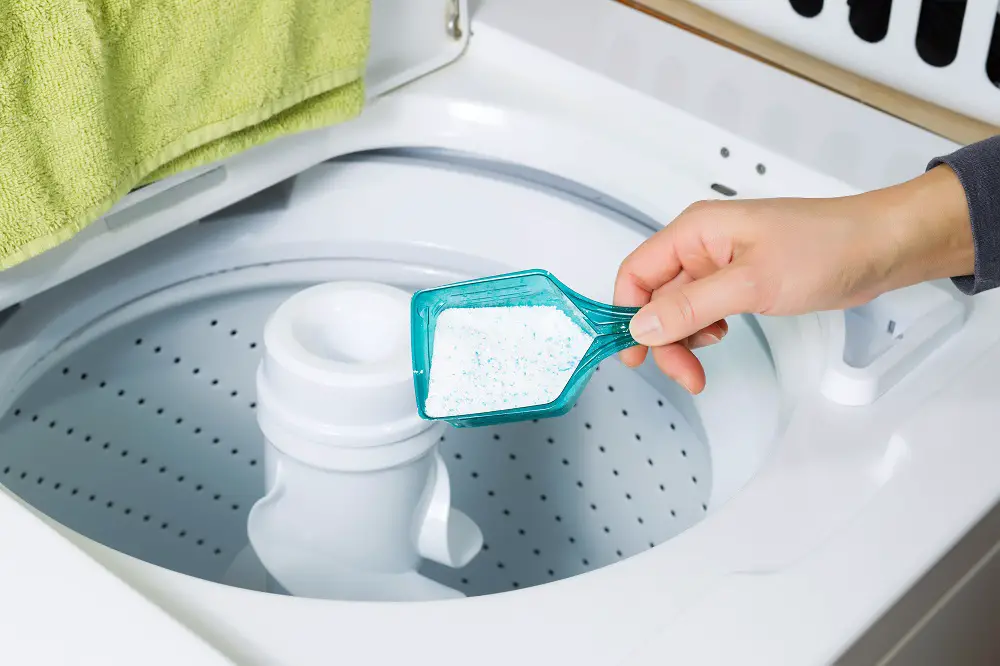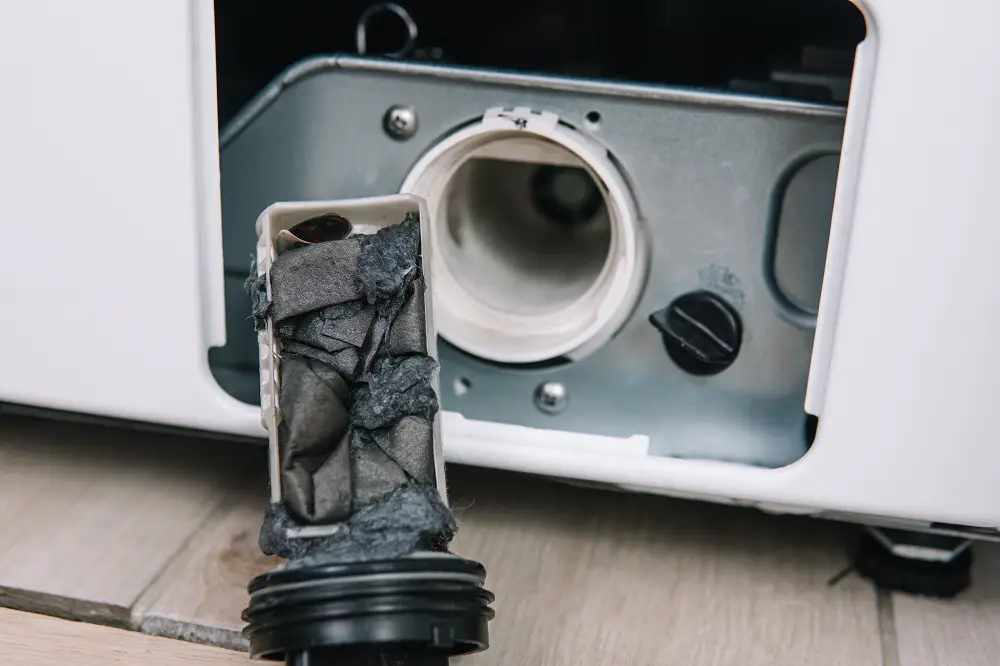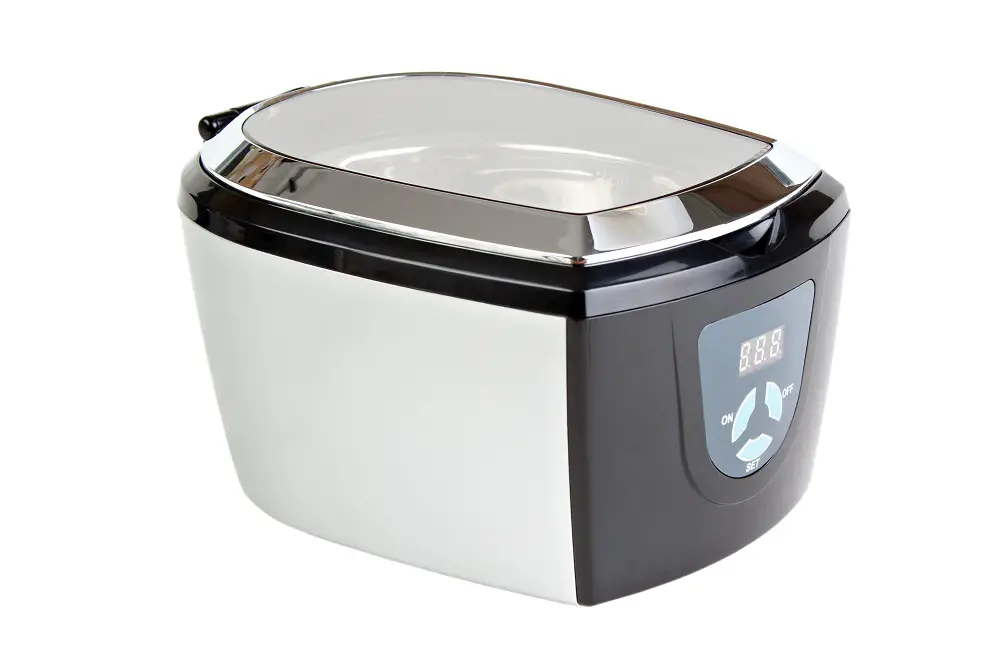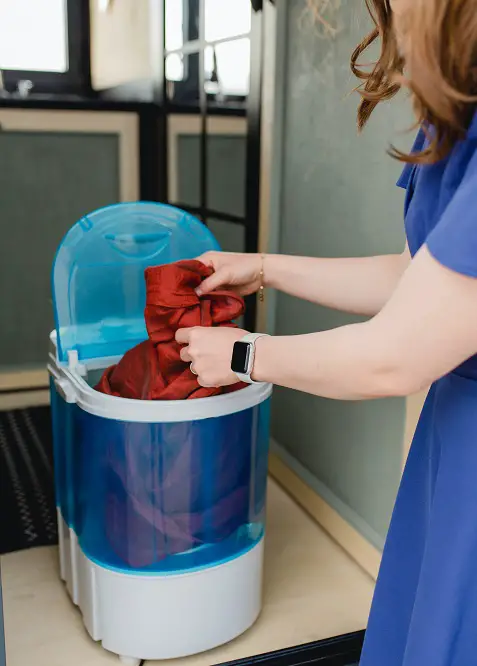Portable washing machines help save money on utility bills with reduced use of water and electricity than regular washers.
Modern portable washers use between 200 – 700 Watts of power while regular washers are ranging from 400 to 1400 Watts. Portables also do have shorter programs helping to reduce energy costs.
How much electricity a portable laundry machine uses depends on the washer’s model, size, and energy efficiency.
While the electric motor that rotates the drum for the wash and spin cycle and the inbuilt water heater consume the most electricity, automated valves, pumps, and digital control panels also utilize energy (minimally).
So how much electricity do portable washers use? Let’s have a look at some real numbers.
Table of Contents
Electricity Consumption Of Portable Washers
Among the many portable washing machines available, here’s a comparison of a few different capacities in terms of electricity consumption.
Concerning energy consumption two main factors are highly relevant:
- Power of the device (given in Watts)
- Time of the chosen cycle (check How Long Do Portable Dishwashers Run?)
If you want to save energy, you must choose a model low in power (for the desired capacity) AND that only needs short cycles.
To give a clearer picture of how much energy portable washers use, we have listed typical numbers for different-sized portable washers:
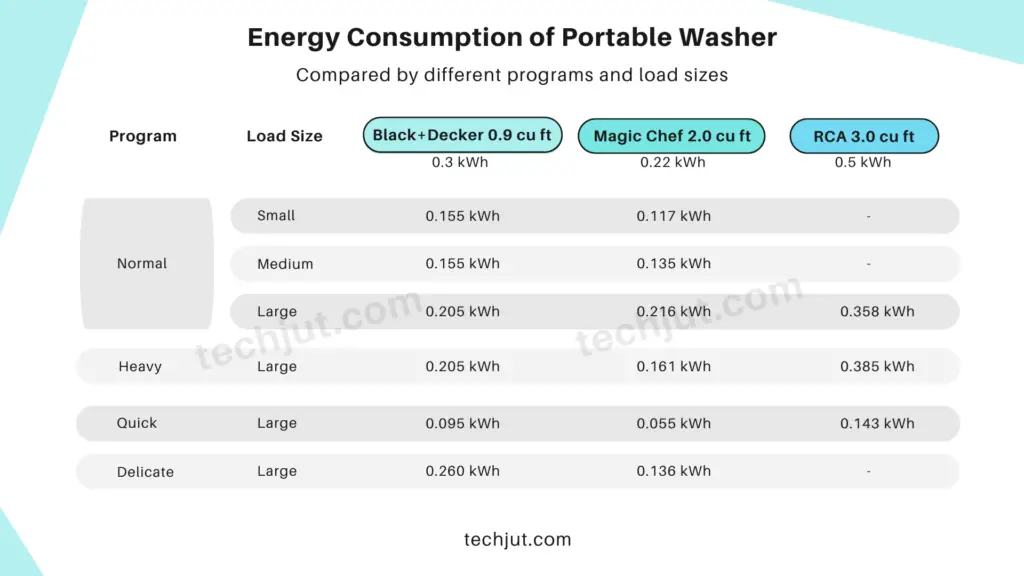
The table shows that power is one of the main factors influencing consumption.
You can also see, that capacity is only an indicator and counterintuitive energy usage can occur.
Energy Costs Of Portable Washers
Based on the electricity consumption statistics of the different portable washing machines listed, the energy costs per cycle and on an annual basis are listed here, with energy charges ranging from 10, 20, and 30 cents per kWh.
Assuming the machine is run for six cycles a week, the corresponding energy costs are:
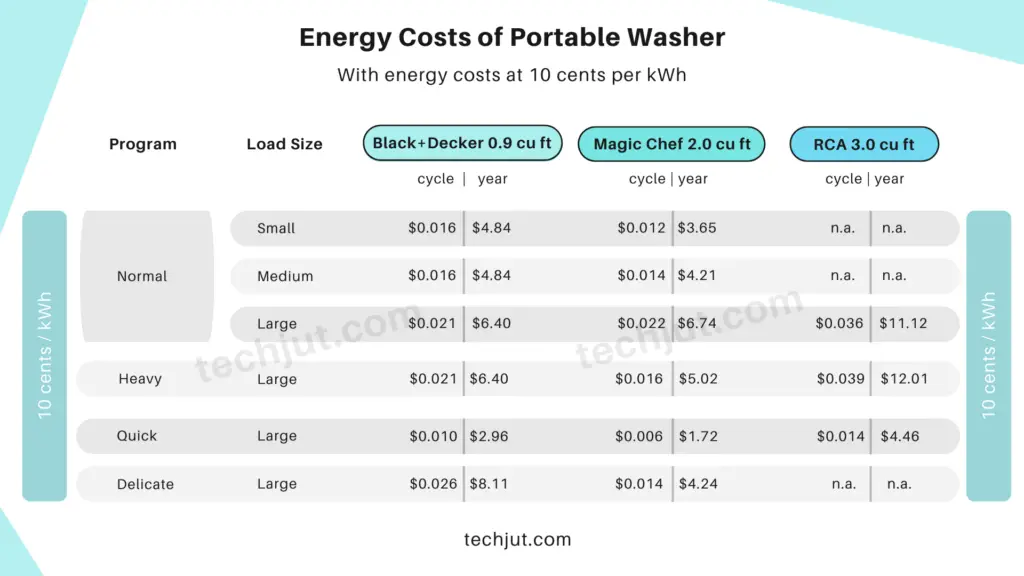
The calculation gives some real numbers for the energy costs you will have to pay over a year. Unfortunately, the energy costs per kWh have mostly left the range of 10 cents, but the comparison with higher ranges is alarming.
You can also see that annual costs don’t have a big impact.
The biggest difference is $7 which is almost nothing in a whole year!
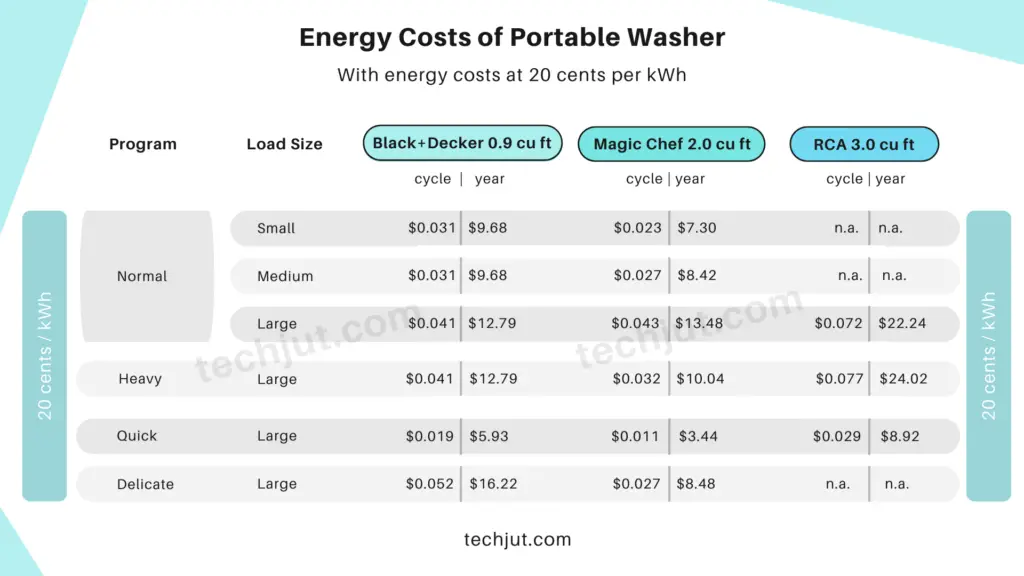
The risen energy costs clearly show some more relevant numbers. The differences double and the total energy costs too.
Now, the additional costs are starting to play a role, especially considering the long run when the machine will be used for several years.
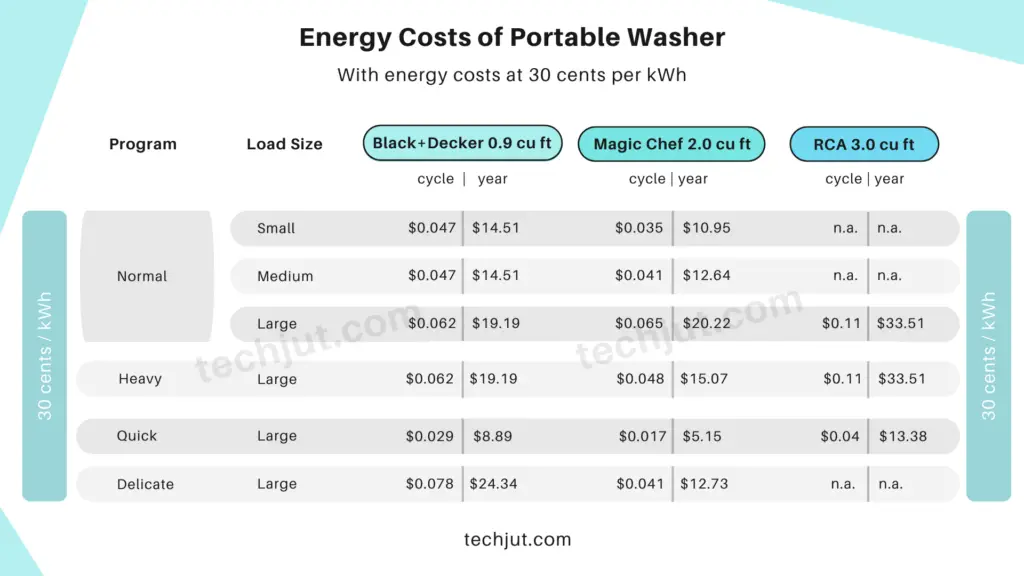
High energy costs are a huge factor in the purchase and application of each device. Especially washers can be a driving force in rising energy bills.
A comparison of different energy usage is now becoming an obligation for each user.
Reduce Energy Consumption of Portable Washers
Here are basic yet helpful tips to help reduce the energy consumption of a typical portable washer. By using your washing machine efficiently, you can cut down on your electricity bills.
Select the Right Cycle
Different fabrics require different wash cycles. An efficient way to wash clothes is to sort your laundry, especially the jeans or woolen clothes, and use the appropriate cycle that suits the fabric for better cleaning and reduced power consumption.
Wash With Cold Water
Avoid using the hot water feature of your portable washer (if it has one) since a hot wash uses a lot more electricity than a cold wash. If your washer has separate cold and hot water inlets, that’s an added advantage when you do hot water washes.
Run Your Portable Washer During Off-Peak Periods
Some energy providers have off-peak periods when the electricity tariff rates are minimum (usually at night). If this Time of Use plan applies to you, run your portable washing machine during off-peak periods to drastically reduce energy bills.
Pre-Soak Stains
If any item of your laundry has tough stains, pre-treat the stains before adding the clothes to the washing machine.
First, soak the stained clothing item in water for about half an hour, use a stain remover on the stains and give it a rub before loading it into the machine. This helps in better cleaning and reducing the number of wash cycles, helping save some energy.
Use Eco Mode
Many energy-efficient washing machines have a power-saving mode these days. Use the ECO (or similar) mode for the least power consumption if your portable washer has one.
Use Quick Wash
For a small, lightly soiled load, use the quick wash cycle (if available on your portable washer) instead of the normal wash cycle to reduce the wash time and energy consumption. Typical quick wash cycles last 15 minutes.
Use High-Efficiency Detergent
Using the right amount of detergent is essential for effective washing. Check the user guide or manual to know the recommended detergent usage. If you use more detergent, your machine may have to perform an extra rinse cycle to eliminate the soapy lather.
Use a high-efficiency (HE) detergent if the washer manufacturer recommends it. Water-efficient washers work best with these low-sudsing detergents.
Avoid Overloading or Underloading
Always load your portable washing machine optimally. The amount of electricity used is the same if the machine isn’t fully loaded or underloaded as that of an optimal load.
Also, overloading your machine might damage the drum bearings and other machine components. Since there won’t be enough space for the clothes to move about in the washer drum, the clothes won’t get cleaned properly and might need an extra wash cycle.
Ideally, washing twice or thrice a week will help cut down your electricity bill. Collect enough clothes to make a full load each time you operate your portable washing machine.
Avoid Standby Mode
Even though it’s a small amount, washing machines consume power when on standby mode. Don’t forget to unplug your washer between uses or turn it off completely to save power.
Use an Energy-Certified Washer
The Energy Star-certified portable washing machines use about 20% less energy and about 30% less water than conventional models and are an extremely energy-efficient option.
Avoid Sanitary Cycle
If your portable washer has a sanitary cycle, avoid using it unless absolutely necessary. This cycle relies on an internal heater to heat the water, leading to significantly increased energy usage.
It is a suitable option for dirty diapers or sheets and towels when a family member is sick.
Regular Maintenance
Ensure you clean the lint filter of your washing machine regularly. Also, check the water hoses for any debris or blocks and clean these once in 3 – 6 months. Replace the water hoses if there are any signs of damage or wear and tear.
It’s important to keep the appliance itself clean. Clean the exterior of the washing machine with a damp cloth and run an empty load (once or twice a year, based on the usage frequency) with a solution of hot water, vinegar, and baking soda or a store-bought washing machine cleaner.
Portable Washers With Low Energy Costs
Here are some energy-efficient portable washers with low energy costs that help reduce energy bills considerably.

Magic Chef is one of the companies trying to use less energy and apply shorter cycles.
This model has 6 different programs available, is easy to install, and achieves great results.
From $480
Conclusion
Most portable washing machines use 200 – 700 W of electricity, which is comparatively less than a standard washing machine. However, the best portable washing machines are those that not only use less electricity but also have a sufficient load capacity while using short cycles.
Simple techniques like selecting the proper cycle, cold water washes, running the washer in off-peak periods, pre-soaking stains, using ECO-mode, quick wash, HE detergent, and energy-certified washers, regular maintenance, and avoiding overloading/underloading and standby mode will help reduce the energy consumption of a portable machine.
Don’t forget to check the Energy label of the appliance before purchasing one.

